Eight Years On
Since mandatory gender pay gap reporting was introduced in 2017, UK employers have faced increasing scrutiny over disparities in hourly pay between men and women. Across sectors, the overall trend shows gradual but meaningful improvement. While no sector has fully closed the gap, many have seen reductions—especially among companies that took early, deliberate action. This progress, however, is uneven. While some industries have seen strong improvements and even reached single-digit pay gaps, others remain deeply unequal.
UK Gender Pay Gap Progress in Finance (2017–2024)
The finance sector began this eight-year journey with one of the highest average gender pay gaps—35.8% in 2017. By 2024, that figure is still high at 25.9%. Notably, HSBC recorded the greatest reduction, cutting its pay gap by 14.3 percentage points over the period but still has the highest gender pay gap across these six banks. Meanwhile, JPMorgan Chase stands out for having the lowest gender pay gap across these six banks in 2024, reporting just 18.9%. While these numbers reflect real progress, finance continues to lead all sectors in terms of disparity, pointing to deep-rooted structural challenges in senior representation.

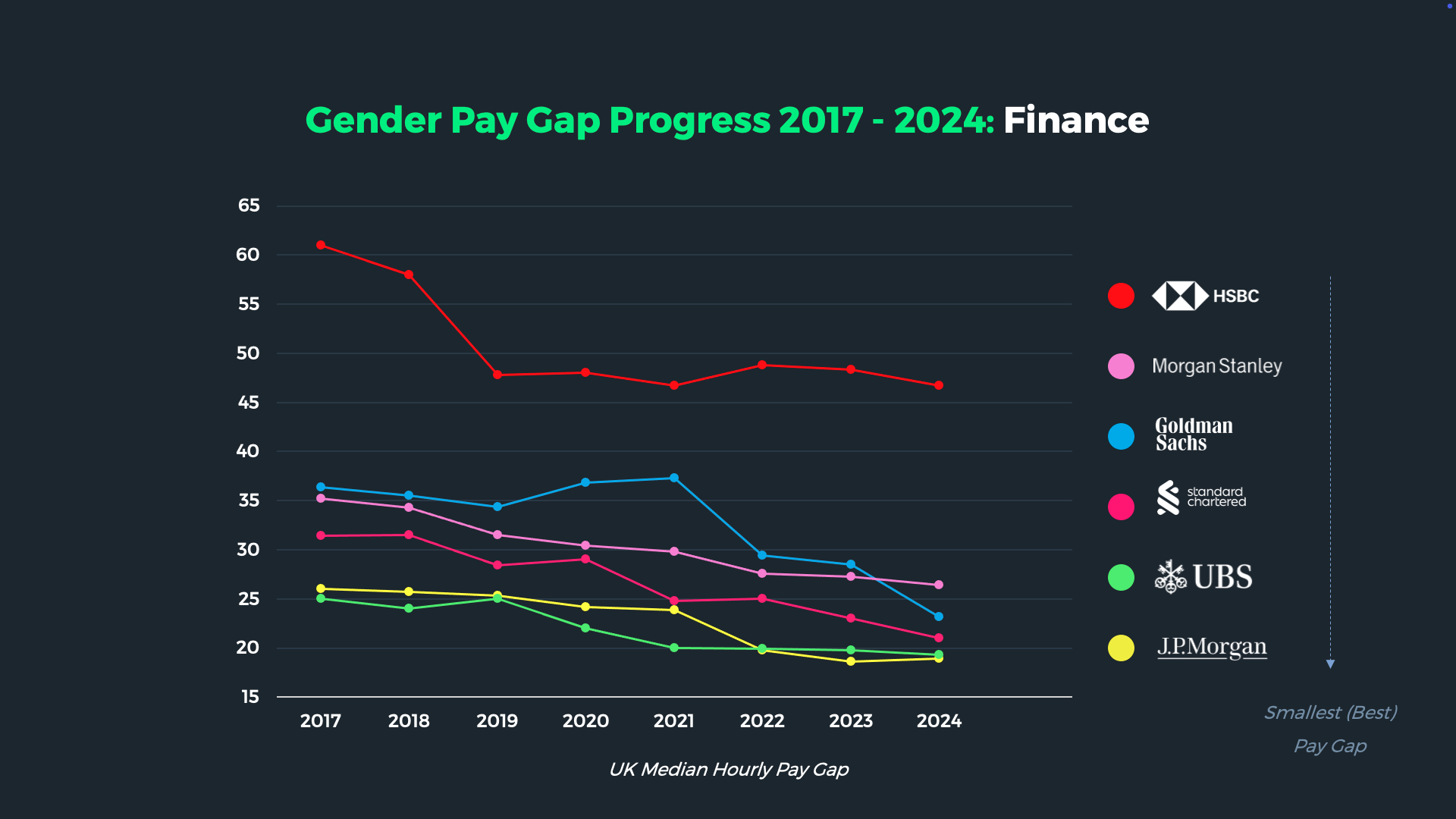
UK Gender Pay Gap Progress in Tech (2017–2024)
The technology sector has shown some of the most impressive progress, with the average pay gap shrinking from 18.5% in 2017 to just 14.3% in 2024. The greatest reduction came from Salesforce, which cut its gap by 10.4 percentage points—demonstrating how consistent equity efforts in fast-growing firms can yield measurable results. Impressively, Meta reported the lowest pay gap in the entire sector, with just 2.7% in 2024.
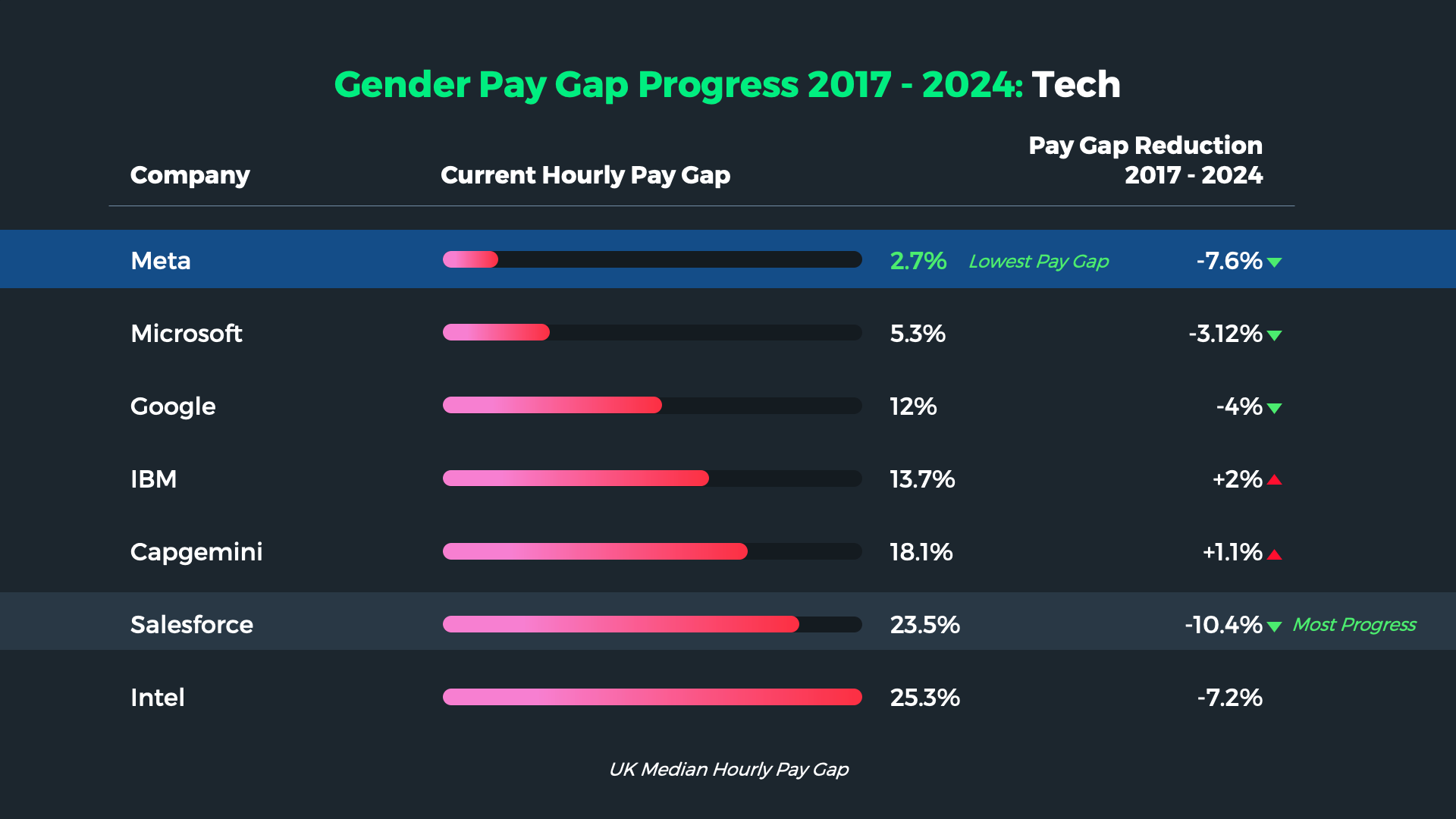
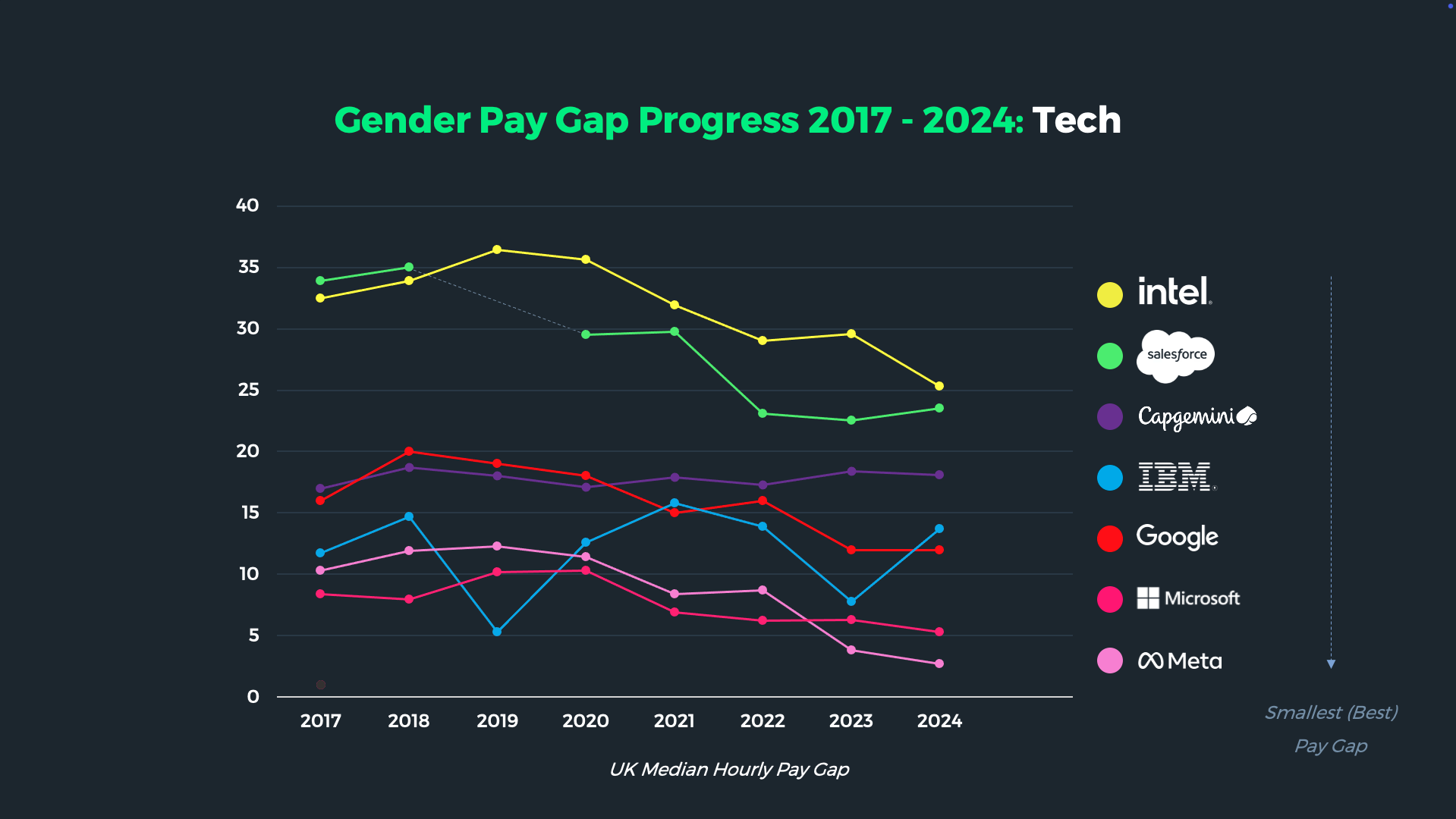
UK Gender Pay Gap Progress in Law (2017–2024)
The legal sector is the only sector of the four highlighted in this report to see an increase in its average pay gap from 29.8% in 2017 to 33.5% in 2024. Clifford Chance has led the way with the greatest reduction of 10.6 percentage points, underscoring its long-term commitment to transparency and change. On the other hand, DLA Piper has reported the lowest pay gap for eight years running across these eight law firms, at 13.7%.
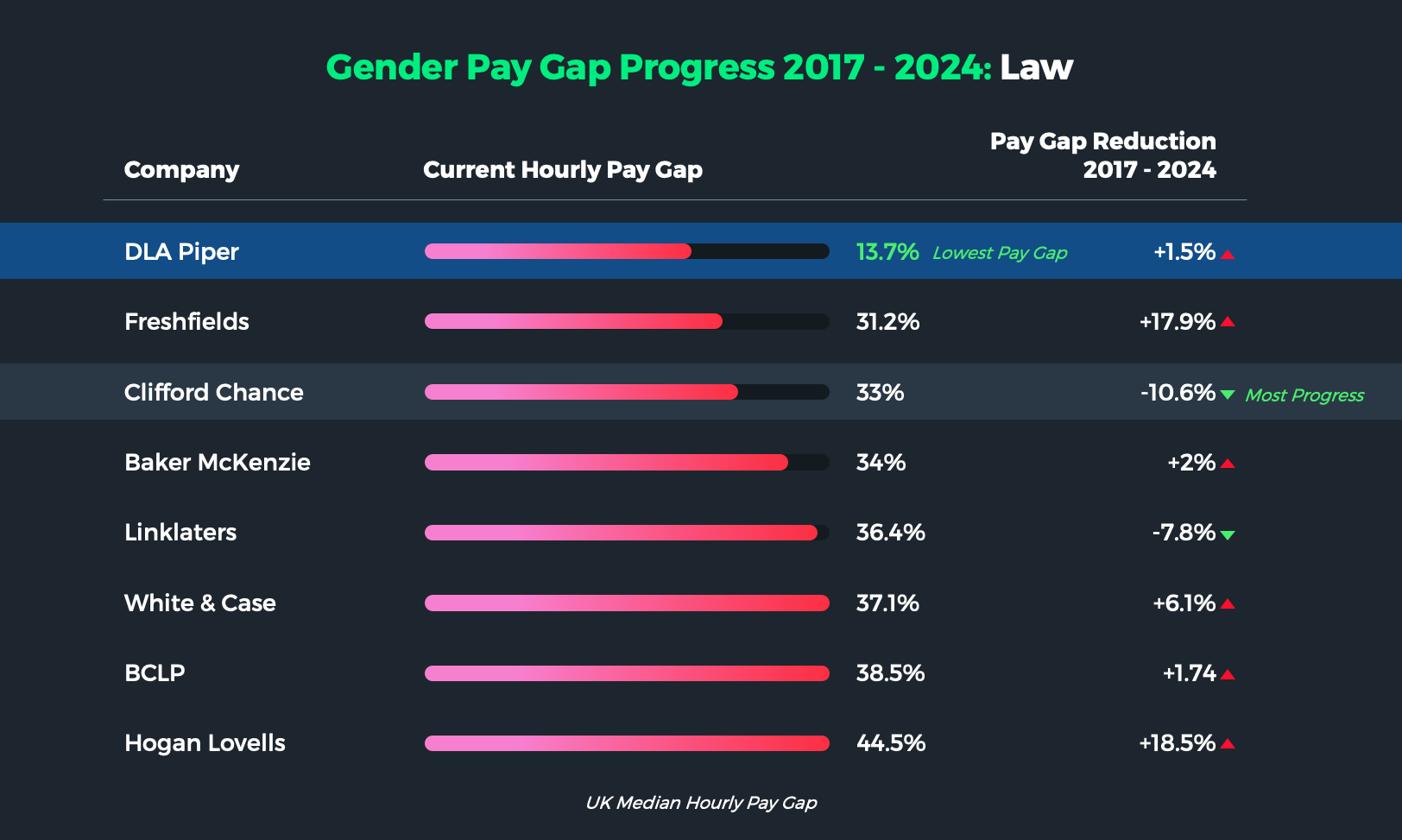
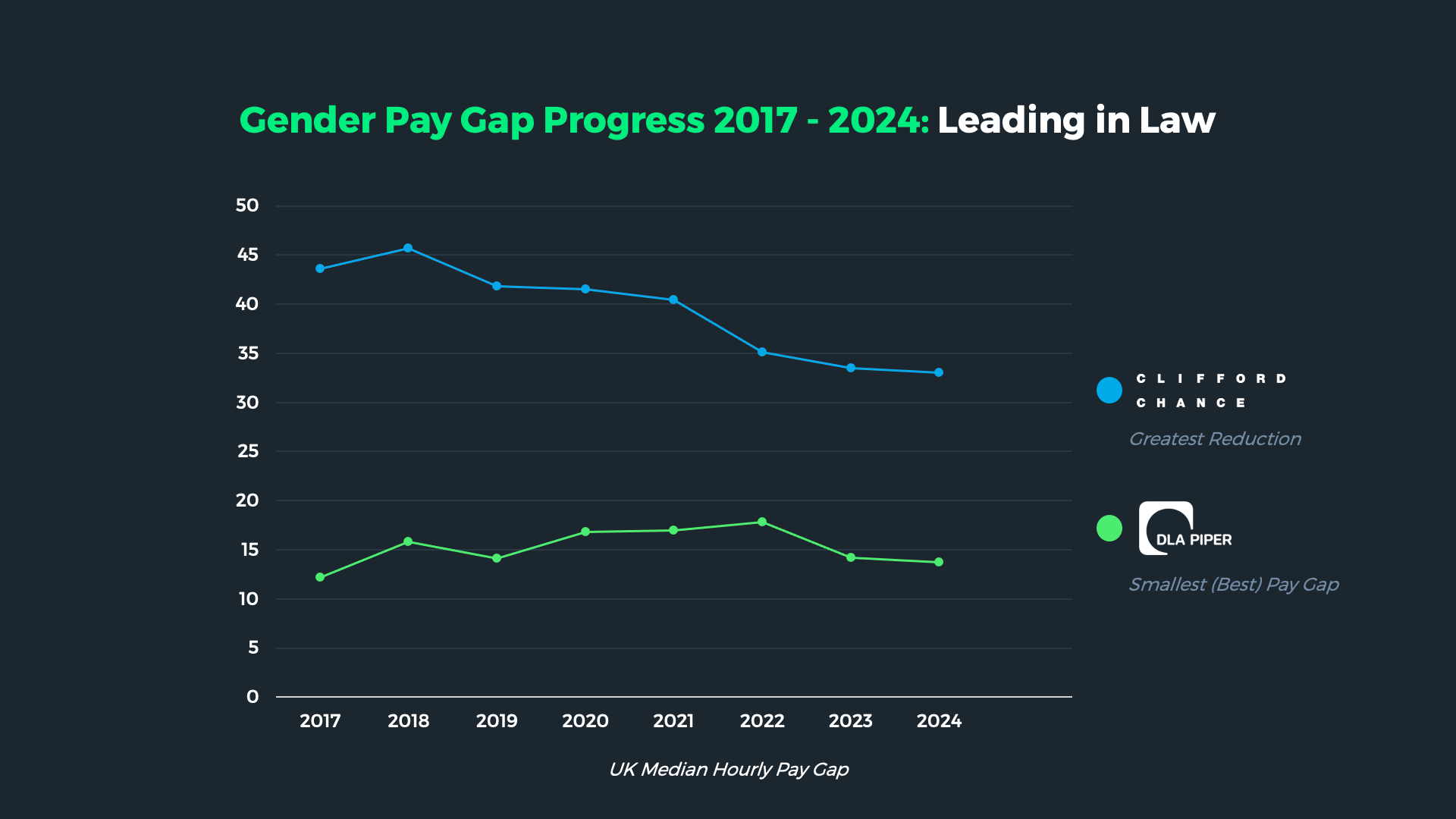
UK Gender Pay Gap Progress in Consulting (2017–2024)
Management and Consulting firms began with a relatively high average gap of 23.8% in 2017, but have since cut it to 13.5% by 2024. Remarkably, Bain & Company achieved both the greatest reduction (a drop of 29.3 percentage points) and the lowest pay gap (6.7%) in the sector. This dual achievement illustrates how focused, firm-wide strategies can produce industry-leading results.
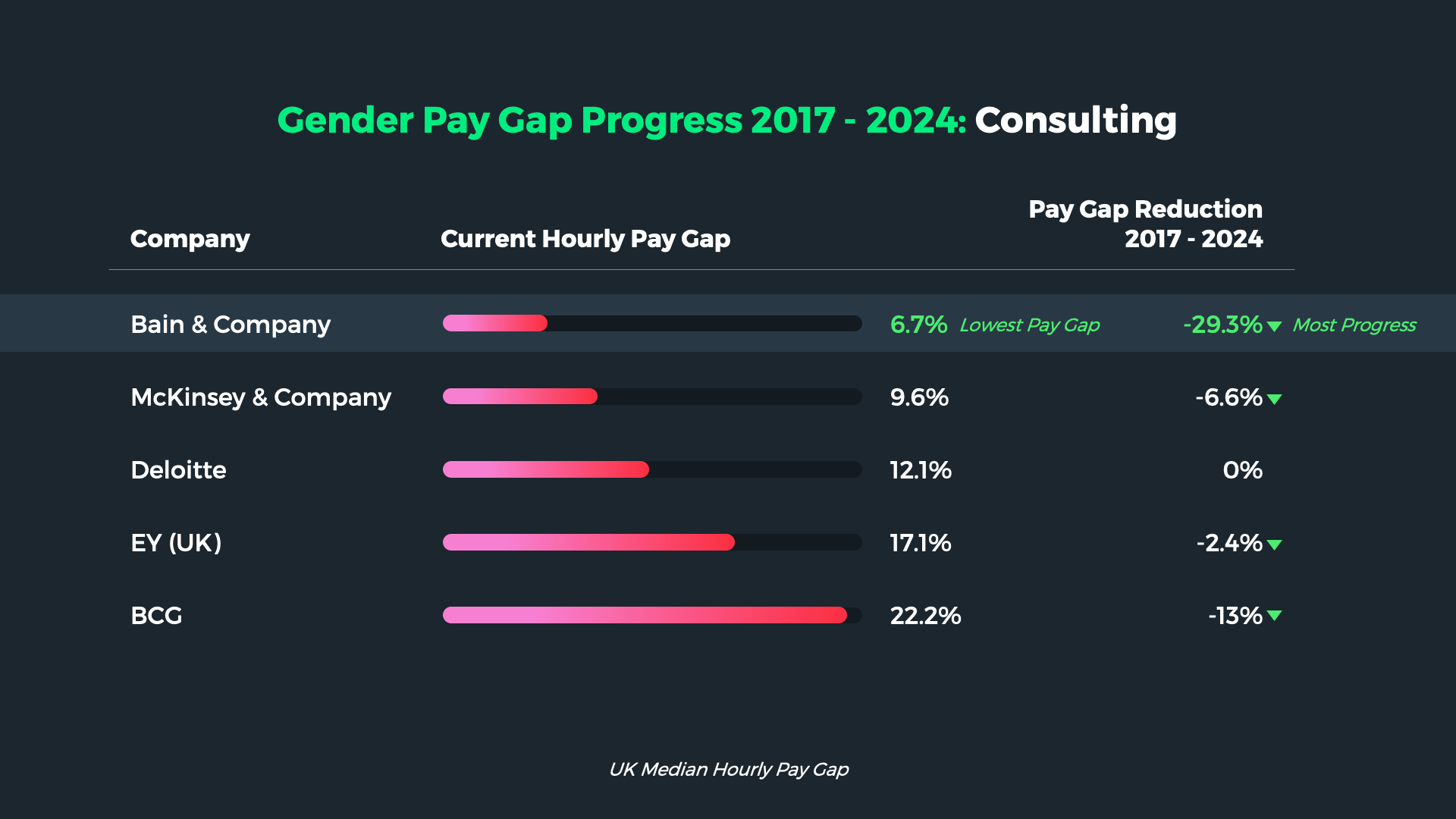
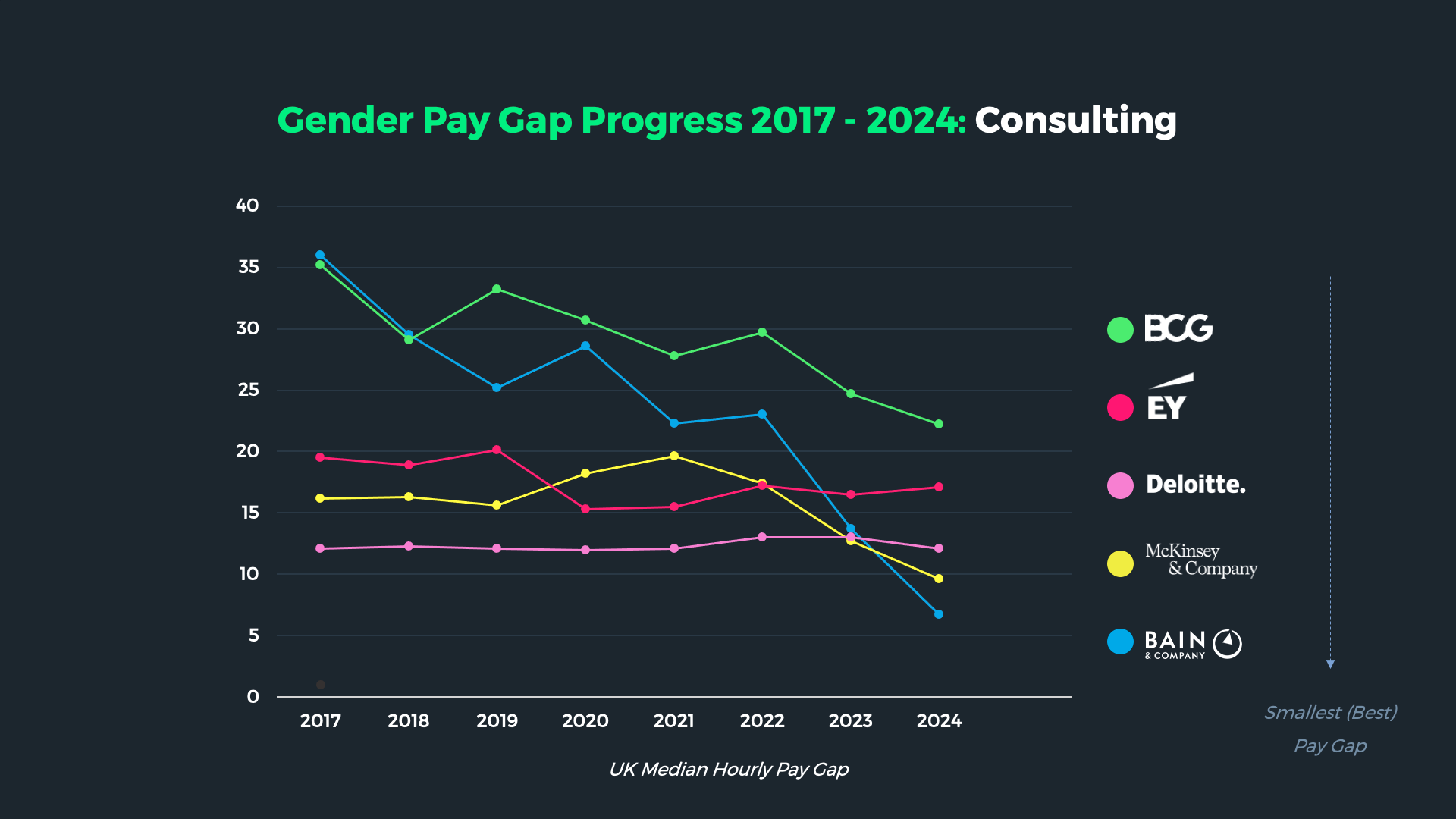
UK Gender Pay Gap Progress - Key Takeaways
When comparing progress across sectors, distinct patterns emerge. Technology is leading on closing the gap, while finance continues to lag, albeit with some notable outliers. Legal and consulting fall somewhere in between, with meaningful yet moderate improvement. Crucially, companies that started with the widest disparities often made the biggest strides, suggesting that early public scrutiny prompted more robust internal reforms. Meanwhile, the firms with the smallest gaps in 2024 tend to share common traits: a strong internal DEI infrastructure, visible leadership support, and consistent measurement and accountability practices.
This dataset tells a deeper story than headline figures alone. It shows that progress is not just a function of sector, but of strategy. Some of the largest improvements occurred at firms that took early, systematic action—like auditing promotion criteria, implementing structured pay bands, and embedding inclusion in leadership KPIs. Additionally, there’s a quiet but clear trend: companies that avoid flashy announcements and instead invest in transparent, grassroots change often outperform their peers. These lessons are rarely highlighted in public reporting, but they are embedded in the data—and they offer a roadmap for companies seeking lasting impact.
Fancy going deeper?
At Windo we hold the Diversity, Equity & Inclusion data for over 700 of the world’s largest organisations (as at April 2025) and within this we have Gender Pay Gap data for 250+ organisations in the FTSE250, Fortune 100, Times Top 100 Graduate Employers and the CAC40 and DAX40.
Within this there are 28 large organisations where the pay gap is weighted in favour of women. You will find our Gender pay Gap Leaderboards in the link below.

